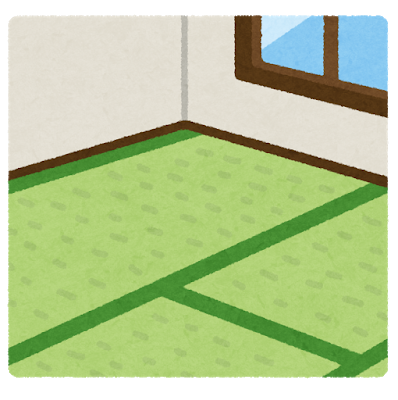Tatami mats in combination with Kotatsu

We all like relaxing after a busy day of running up and down. You can relax as you keep warm is sitting under a Kotatsu on the tatami mat floor. The Kotatsu is a low table that comes with a heating element to warm your lower body. Instead of resting on the bare floor, you can use a Japanese tatami mat and cover yourself with a futon.
In Japan, people craft tatami mats from dried grass to come up with a firm textured type of flooring ideal for sitting and sleeping. Though it is not advisable to spend the entire night warming up in a Kotatsu table, you can take short naps on the mat as you get cozy next to your loved one. We will discuss why people use these mats under the Japanese heating table and share some useful maintenance tips.
History of tatami mats
Unlike today where we buy hard mats for our kotatsu tables, tatami mats produced long ago were thin and foldable. Most of the Japanese homes consisted of Tatami mats across the entire room. The system has changed since Japanese houses now dedicate only a single room to fit tatami mats instead of the whole home. Though in the past people wove the straw using their hands, tatami mats are now produced by machines.
What makes a tatami mat?
Tatami is a Japanese straw floor that been in existence for centuries now. Tatami mats placed next to the Kotatsu are made from different materials such as rice straw, polystyrene foam and wood chipboards. The soft woven cover is what makes these mats comfortable to sit on when warming yourself around the table.
Why is a tatami mat used in combination with Kotatsu?
Your Kotatsu table cannot be complete without the tatami mat. It forms a comfortable base for your heating table and futon especially when it is cold. Since a tatami mat is compact, you can easily set two mats across each other and place the Kotatsu table in between them without worrying about them occupying a lot of space. They fit perfectly in a small living room and help your feet remain comfortable for hours.
When you are using Kotatsu table during the summer, you can stop using futons to cover yourself but still maintain a tatami mat. These mats create an airy and natural environment to ventilate your room. The trapped air in them acts as a natural insulator to slow down the circulation of heat in your room and regulate the temperature. You can set your Kotatsu electric heater at the lowest setting and let the tatami mat keep the entire room cool during hot conditions.
A tatami mat also comes in handy during the cold, dry winter. As the kotatsu heating element works hard to keep your lower body warm, the air trapped in your tatami mat prevents the heat from escaping. Combining the two, therefore, translates to more heat compared to using the Kotatsu table alone.
Apart from regulating the temperature, the tatami mat also acts as a sound insulator. When you are taking a nap as you warm your feet under the Kotatsu, the trapped air inside your tatami mat insulatessound. The cushioned surface of the mat minimizes echoing of footsteps to help you rest soundly without noise interference. If you are listening to music as you rest on the tatami mat while warming your legs through kotatsu, the trapped air in the mat also softens the sound of music to give you a peaceful relaxation experience.
Usage and maintenance

Tatami mats are delicate, and they need proper care for them to serve you for long. Before you place a kotatsu near this type of mat ensure you include a protective cover to prevent the mat from forming scratches.
You need proper ventilation as you combine the use of Kotatsu and tatami mats. The flooring has some smell which can cause allergies to sensitive people. Leave your windows open during the day for fresh air to circulate so that you can lie down on your mat as you heat yourself under the table without sneezing.
Vacuum clean your mats regularly since they are prone to mold and spray them if they get dust mites. Also, ensure that you take care of your Kotatsu table well so that it continues producing heat consistently. During winter, you may be forced to combine your kotatsu mat with a futon to warm yourself under the kotatsu mat. Since the two materials absorb moisture from your body, they can easily breed mold. To prevent this, air out your futon and mat frequently.
Vacuum clean your mats regularly since they are prone to mold and spray them if they get dust mites. Also, ensure that you take care of your Kotatsu table well so that it continues producing heat consistently. During winter, you may be forced to combine your kotatsu mat with a futon to warm yourself under the kotatsu mat. Since the two materials absorb moisture from your body, they can easily breed mold. To prevent this, air out your futon and mat frequently.
If it is too cold, wear socks before sitting on your tatami mat but never use shoes on them. Kotatsu and tatami mats are not only available in Japan. If they are not available in your area, you can order authentic pieces from reputable online sites such as Amazon. Purchase a tatami mat and a Kotatsu today and improve your living conditions.